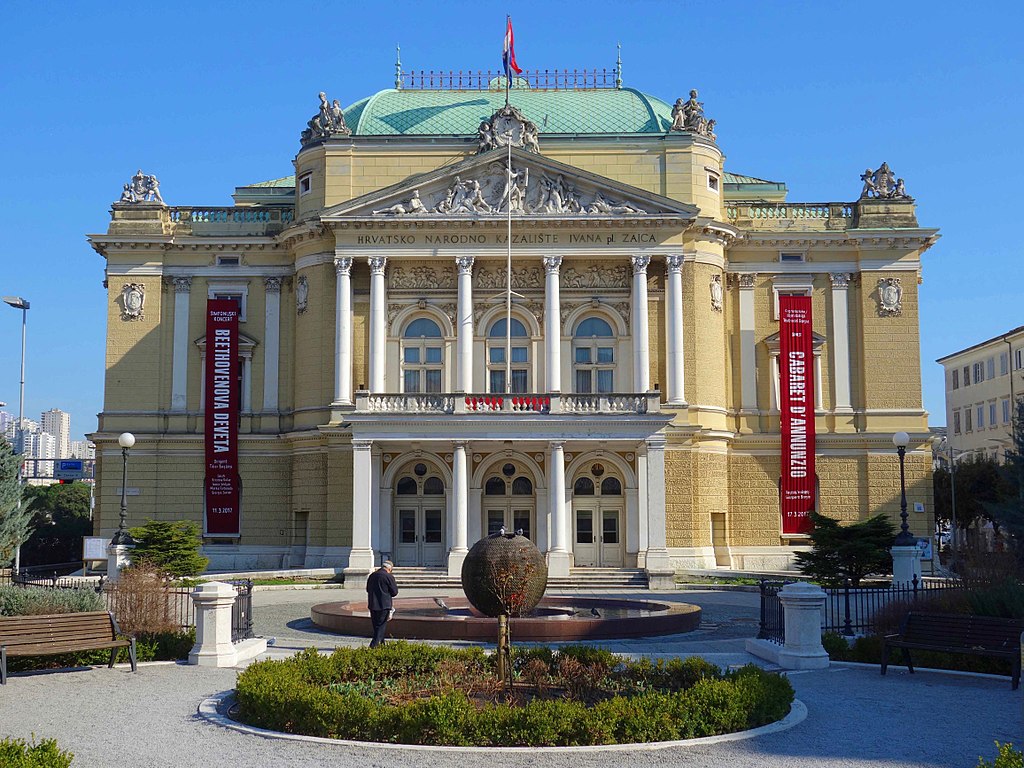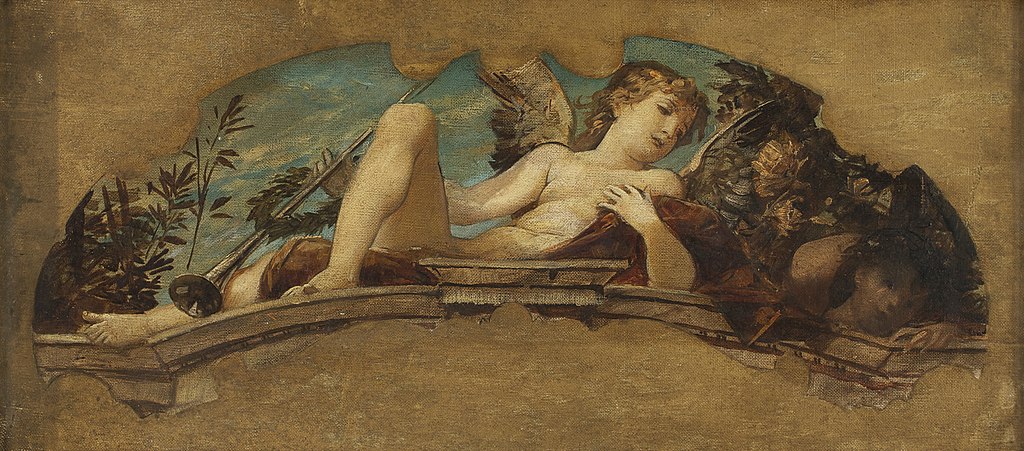Croatian National Theatre in Rijeka Joins Creative Europe Project, Worth €3 Million
March 9th, 2022 - Twelve countries from Europe and Africa are joining forces in a cultural project that will be implemented over the course of four years
The Croatian National Theatre Ivan Zajc from Rijeka will partake in a four-year EU project together with a number of major European and African cultural institutions and cities.
The recently approved project, entitled DECONFINING, will be co-financed by the Creative Europe programme. The project is worth over €3 million in total, and the budget granted to the Croatian National Theatre Ivan pl. Zajc will amount to about €400,000.
The DECONFINING project will connect cultural scenes, artists and scientists, as well as universities and audiences from Europe and Africa. The Zajc theatre will create a co-production with the largest theatre in Africa, the Grand Theatre National Doudou Ndiaye Coumba Rose (National Theatre Dakar) from Dakar, Senegal.
Both Croatian and Italian drama ensembles of the Zajc theatre will participate in productions of plays, installations and podcasts; they’ll plan international tours, create an open digital archive, organise forums, conferences and mobility platforms, and publish an anthology of new artistic works.
The project involves 12 partners from 11 European and one African country. Along with the Zajc theatre from Rijeka, the partners are: ITI Germany from Berlin (project owners); Pro Progressione Kulturalis Nonprofit Kozhasznu KFT, Hungary; Bodo2024 ICS, Norway; Kulturhaupstadt Bad Ischl - Salzkammergut 2024 Austria; National Kaunas Drama Theatre, Lithuania; Art Transparent, Poland; Umeni Institute - Divadelni Ustav, Czech Republic; On the Move, Belgium; Goethe Institut Madrid, Spain; Institute of Transmedia Design, Slovenia and Culture Funding Watch, Tunisia.
This is the third project of the Croatian National Theatre Ivan Zajc that is co-financed by the Creative Europe programme.
The first was (Re)Discovering Europe, a project which dealt with the problems of minorities in Europe and involved a unique co-production of five European minority theatres - Pirandello’s Mountain Giants, performed in five different languages during the same play.
The second European project of the Rijeka theatre focused on audience development. Through the ADESTE + project, the Zajc theatre implements programmes designed to reach new audiences and solidify the connection of the existing audience with its theatre. One of the results of the ADESTE + project is the recently opened theatre gallery Zajc, first of its kind in Croatia.
Source: Croatian National Theatre Ivan pl. Zajc
Unknown Klimt: Works of Legendary Artist on Display in Rijeka After 136 Years
Early in his career, Gustav Klimt was commissioned to create three ceiling paintings for the new theatre building in Rijeka. It took 136 years for the public to finally get to see them up close. The exhibition Unknown Klimt: Love, death, ecstasy at the Rijeka City Museum provides a rare chance to discover the early works of the legendary artist
Gustav Klimt is undoubtedly one of the most famous artists of all time. Did you know that three of his works have been created specifically to be displayed in Rijeka, Croatia? Not in a museum (not until recently, at least), but mounted on the ceiling of the Croatian National Theatre Ivan Zajc, along with six other works painted by Klimt’s brother Ernst and another Viennese artist, Franz Matsch.
The theatre building in Rijeka was designed by the renowned Viennese architectural studio Helmer and Fellner, specialised for theatres and concert halls. Dozens of cultural landmarks were built after their plans across central Europe in the second half of the 19th century, including the Croatian National Theatre buildings in Zagreb and Varaždin. Out of their three theatre projects in Croatia, the one in Rijeka has the best preserved original form; it was also the first building in Rijeka to get electrical lighting and was equipped with the first telephone in town.

The Croatian National Theatre in Rijeka / Image by Antonio199Cro, Wiki Commons
In 1885, the architects commissioned artworks for the interior from three young Viennese artists who worked together under the name of Art Society (Die Künstler-Compagnie): brothers Gustav and Ernst Klimt, and Franz Matsch. They were all just getting their careers off the ground; Gustav, who would later become the biggest name of the three, was only 23 years old at the time.
The artists were to produce nine large format paintings depicting mythical and historical scenes, widely popular at the time and also thematically suitable for theatre decor. The completed commissioned works were shipped to Rijeka and installed on the ceiling of the auditorium in the new theatre.
All three artists went their separate ways in years following the Rijeka commission. Ernst Klimt died young, in 1892, and was thus deprived of the chance to achieve notable artistic renown. His death also marked the end of the Art Society, as the other two artists decided to part ways and explore different artistic avenues.
Gustav Klimt embraced the groundbreaking Art Nouveau style and eventually became the icon of the revolutionary movement, while Matsch chose the familiarity of the traditional academic milieu, going on to work as a portraitist in the aristocratic circles.
The nine large canvases painted for the theatre in Rijeka provide valuable insight into the early stages of the artists’ careers, especially Gustav Klimt who would in time develop a particularly distinctive style not at all reminiscent of the classical theatrical decor.
A once in a lifetime opportunity
In March and April 1885, right after the three artists completed the commission, the paintings were displayed in the Museum of Art and Industry in Vienna before they were shipped to Rijeka.
In 136 years since the works were painted, this was the single time they were displayed at ground level, in a museum environment where they could be admired by the public.
As soon as they arrived in Rijeka, they were mounted on the ceiling of the auditorium in the new theatre and remained at a height of some 20 metres above ground for over a century. While technically visible from the auditorium, one would have to strain their neck significantly trying to make out the main motifs of the paintings; they fit superbly into the grandeur of the ornate theatrical decor, but it’s not the optimal way to appreciate the likes of Klimt.
The paintings were restored once before as part of a larger scale renovation of the theatre building in 1978, but were not displayed publicly at the time.
And then came 2020 and a grand exhibition at the Sugar Palace of the Rijeka City Museum. Unknown Klimt: Love, death, ecstasy literally provides a once in a lifetime opportunity to see the precious works up close and admire the intricate details.

Ernst Klimt, Genius With a Trumpet
In the preparatory stages of the exhibition planning, the nine paintings were dismantled from the theatre ceiling in 2018 and have undergone a thorough restoration. Works by Gustav Klimt and Matsch were restored by Ana Rušin Bulić and Goran Bulić at the Rijeka department of the Croatian Restoration Institute, while those created by Ernst Klimt were shipped to the Easel Painting Department of the Croatian Restoration Institute in Zagreb where Slobodan Radić performed restorative works.
Once the exhibition closes and the canvases are installed back on the theatre ceiling where they belong, we’re unlikely to get another chance to admire them up close in our lifetime. Unknown Klimt was originally supposed to close in late 2021, but due to popular demand the exhibition was extended and will remain open until March 31st, 2022.
If the road takes you to Rijeka - the upcoming carnival in February could be a nice motivator to visit - we urge you to stop by the Sugar Refinery Palace and avail of this rare opportunity to see the early works of the world famous master and his fellow artists.
Make sure to also check out the superb permanent exhibit at the Rijeka City Museum at the same location; it’s a must-see spot in Rijeka and is included in the ticket for the Klimt exhibition.
The following nine works made for the Rijeka theatre are displayed at the exhibition Unknown Klimt:
Gustav Klimt:
St. Cecilia
Anthony and Cleopatra
Orpheus and Eurydice
Ernst Klimt:
Allegory of Theatrical Art
Genius with a trumpet
Genius with a basket of flowers
Franz Matsch:
Allegory of Love Poetry
Allegory of Dance
Allegory of Comic Opera
Learn more about the exhibition at the Rijeka City Museum website.
HNK Rijeka Italian Drama Ensemble Marks 75th Anniversary
ZAGREB, 27 Nov, 2021 - The Italian Drama ensemble of the Croatian National Theatre (HNK) in Rijeka on Friday officially marked its 75th anniversary, with Culture Minister Nina Obuljen Koržinek saying the ensemble was the only permanent professional Italian theatre ensemble outside Italy.
The ensemble was established in 1946, as part of the then National Theatre, the main cultural institution in Rijeka, where the Italian language has been promoted on an equal footing with Croatian from the beginning, the minister said.
"The Italian Drama ensemble has been one of the fruitful bridges between the two cultures," she added.
She said that the Italian Drama ensemble performed also in other parts of the Kvarner region, as well as in Slovenia and Italy.
The ceremony at the HNK Rijeka was held on the same date when in 1946 the Italian Drama ensemble performed for the first time, with the "Il burbero benefico" comedy by Carlo Goldoni.
HNK Rijeka director Marin Blažević said the Italian Drama ensemble staged its first performance a month after the first performance of the Croatian Drama ensemble and some 20 days after the first opera premiere of the then National Theatre in Rijeka.
In the more recent time, members of the Italian and Croatian Drama ensembles have been performing together and members of the Italian Drama ensemble also collaborate on other ensembles' projects, he said.
"We are celebrating the unique Italian Drama ensemble and the common international future," said Blažević.
The president of the Italian Union Executive Board, Marin Corva, said the Italian Drama ensemble was one of the most important institutions of the Italian ethnic minority in Croatia and Slovenia.
The Italian Drama ensemble is an example of the two countries' deep ties, he stressed.
For more on lifestyle, follow TCN's dedicated page.
For more about Croatia, CLICK HERE.
Rijeka Theatre Signs Contract with New Director, Despite Opposition from Culture Minister
Culture Minister Hasanbegović rejected the appointment of Marin Blažević as the new director of the Croatian National Theatre (HNK) in Rijeka.


